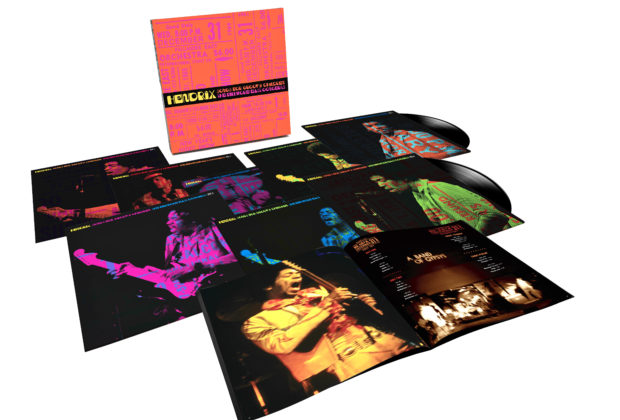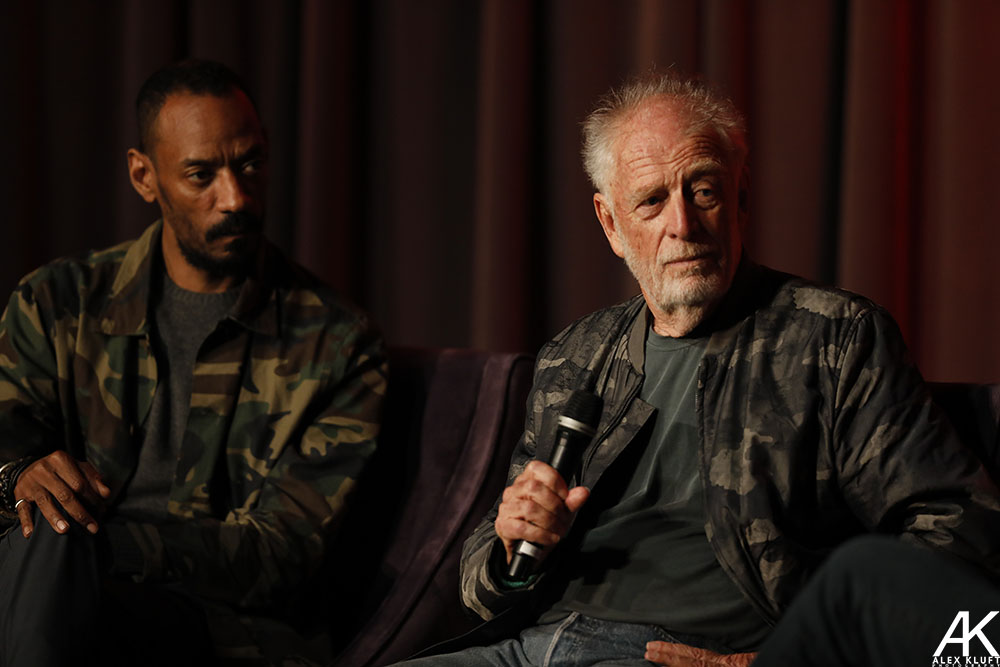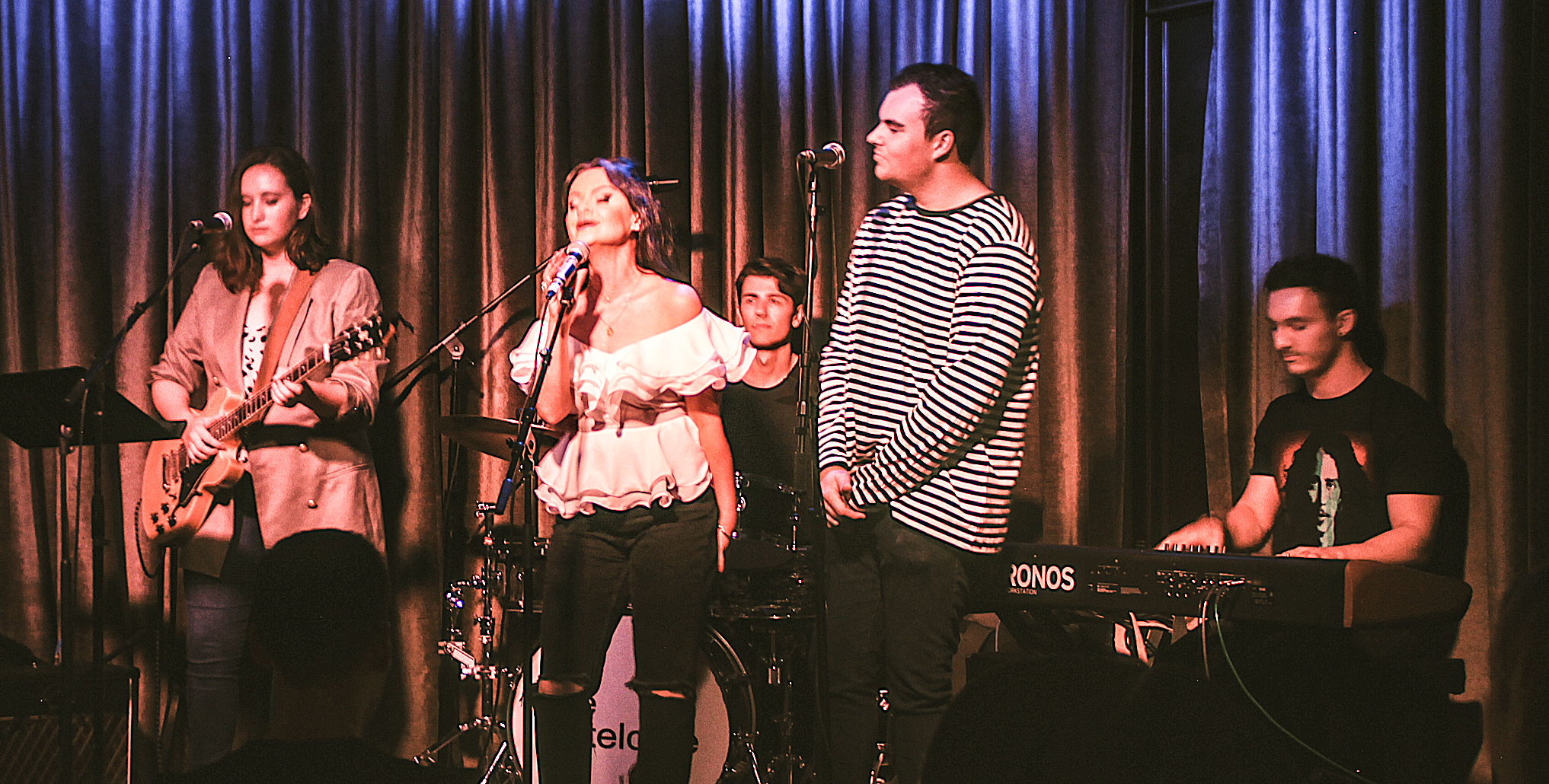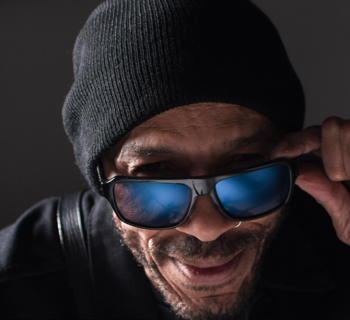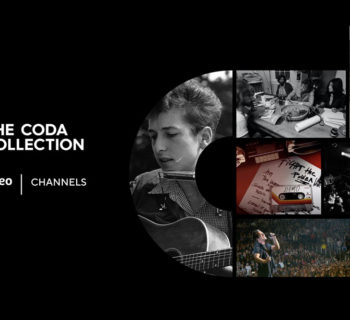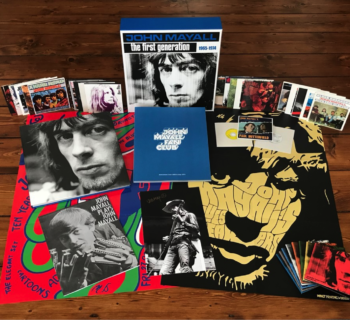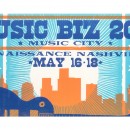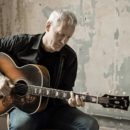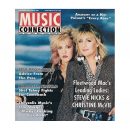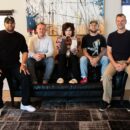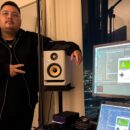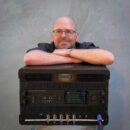Experience Hendrix LLC and Legacy Recordings, a division of Sony Music Entertainment, released Songs For Groovy Children: The Fillmore East Concerts by Jimi Hendrix, on CD and digital this past November, with a vinyl configuration to follow on Dec. 13.
This collection assembles all four historic debut concerts by the legendary guitarist in their original performance sequence. The five CD or eight vinyl set boasts over two dozen tracks that have either never before been released commercially or have been newly pressed and newly remixed.
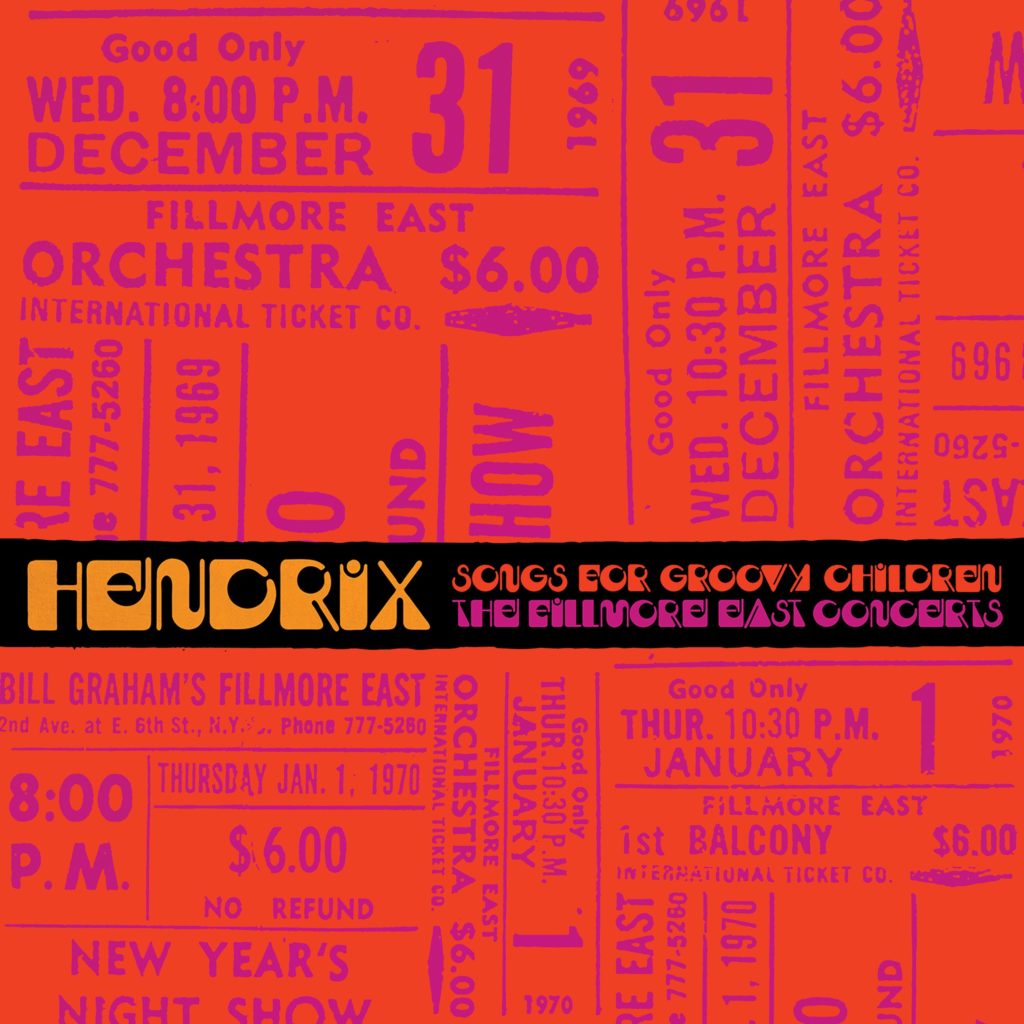
Over the course of four extraordinary years, Jimi Hendrix placed his indelible stamp upon popular music with breathtaking velocity. Measured alongside his triumphs at Monterey Pop and Woodstock, Hendrix’s legendary Fillmore East concerts illustrated a critical turning point in a radiant career filled with indefinite possibilities.
The revolutionary impact Jimi Hendrix, Billy Cox and Buddy Miles had upon the boundaries and definitions of rock, R&B, and funk can be traced to four concerts over the course of two captivating evenings.
These performances were first celebrated by Band of Gypsys, which featured six songs from the two Jan. 1, 1970 concerts, including “Machine Gun,” the album’s dramatic centerpiece. Issued in April 1970, Band of Gypsys challenged and surprised the wide following of Jimi Hendrix with its extended arrangements and vibrant mix of rock and soul.
In June of 1969, at the height of their fame, The Jimi Hendrix Experience closed a musical chapter. Before the shockwaves could settle, Hendrix assembled a new, expanded ensemble to perform at Woodstock in August. A new chapter was opened as Hendrix introduced Gypsy Sun and Rainbows. The large ensemble included Jimi’s longtime friend, Billy Cox, on bass, whom he had befriended when both were serving with the 101st Airborne Division in Ft. Campbell, Kentucky in 1962.
This Woodstock lineup was short-lived; from its ashes, a new trio emerged in October that Hendrix dubbed Band of Gypsys, consisting of Hendrix, Cox and Electric Flag drummer Buddy Miles, who would also contribute occasional lead vocals. Hendrix was inspired by his collaboration with Cox and Miles and this creative renewal drove the development of promising new material such as “Power Of Soul,” “Burning Desire” and the extraordinary “Machine Gun.”
Their debut live performances were a series of four concerts at the Fillmore East in Manhattan—two on New Year’s Eve 1969 and two on New Year’s Day 1970, each of which was professionally recorded and supervised by engineer Wally Heider.
Hendrix had sold out Madison Square Garden just nine months prior, but the Fillmore East was chosen as the setting for a live recording.
Long before his fame, Hendrix had signed what he thought was a release for appearing as a studio musician in October 1965. Unfortunately, the one-page artist agreement drafted by PPX Industries bound his services for a period of three years.
Unwilling to explore hands tied, Hendrix agreed to a 1968 legal settlement whereby Capitol Records would be granted the distribution rights for his next album. By the autumn of 1969, Capitol and PPX were pushing hard for the album delivery and Hendrix decided to give them a live album. However stressful this legal obligation had been for the guitarist, the end result proved to be an artistic triumph.
True to his unpredictability, Hendrix opened his four-show stint with a masterful, 11 song set that did not feature a single song he had commercially released. Exciting new songs such as “Izabella,” “Ezy Ryder” and “Burning Desire” thrilled the sold-out house. Hendrix would pepper the remaining three shows with supercharged re-workings of favorites such as “Stone Free,” “Purple Haze,” and “Fire” but these were presented alongside such devastating, newly developed fare as “Machine Gun.”
In his review of the second New Year’s Eve concert, Down Beat critic Chris Albertson wrote, “That ability of his to utilize fully the technical possibilities of his instrument, combined with his fertile musical imagination, makes him an outstanding performer.”
“The Band of Gypsys turned the world upside down,” Billy Cox stressed to me in a 2014 interview about those four fever-dream music recitals.
“Jimi was at his peak then. He had done [earlier] albums and then I came on board with a lot of the things we had. He called them ‘patterns,’ but they’re just riffs. We played around with them and a lot of times he’d say, ‘If people heard us play this tuff they’d lock us up.’ But we were completely free musically.
“So the Band of Gypsys Jimi was at his peak. Buddy Miles! Oh man! What a guy. No restraint. The Band of Gypsys was a trend-setting group. We didn’t know that. But it has been said that The Band of Gypsys inspired reggae, free-form rock, portions of rap. Jimi wrote about 90 percent of that stuff. And Buddy had ‘Them Changes.’ We did some stuff that we put together that we enjoyed which had a rhythmic feel to it.
“We were on big time. After the first set when we walked off, I remember Jimi just smiling, and telling me and Buddy, ‘It’s gonna be all right now.’”
“I was 14 going on 15 when I caught Jimi and The Band Of Gypsys at the early show at the Fillmore East on Jan. 1st, 1970,” recalled writer Michael Simmons.
“A kids’ choir called The Voices of East Harlem opened. Their soaring voices were the perfect way to greet the new decade and I thought it was cool that Jimi embraced the notion of community here in New York—one of his hometowns along with Seattle and London. He emphasized his guitar playing that night and disregarded stage shtick. We—the audience—were witnesses to Jimi's evolution as an artist and it was thrilling. Personally, I was glad—picking with his teeth or with his axe draped behind his back was getting old.
“I later learned that Fillmore boss Bill Graham had encouraged him to just play. And yet he was very personable and relaxed and yapping about that New Years’ Day's football scores. Most importantly, I’ve never seen a guitarist—or any musician—who could equal him in technique or feel or presence. I have friends who got to see Coltrane and Monk. My mother—a jazz singer who dated Charlie Parker’s pianist Al Haig—saw Bird. But I saw Hendrix and he set a standard in rock that-for my taste-has never been surpassed. Awww Jimi—though we hardly knew ye, you remain the greatest.”
“Not his most important album, it nonetheless is my personal favorite of them all because his lead guitar improvisations are at the center of the songs, and they continue to amaze in the way solos by Parker or Coltrane continue to amaze,” enthused poet Dr. James Cushing, radio host on KEBF-FM in Morro Bay, CA.
“I use the phrase ‘stealth jazz’ to describe music like ‘Machine Gun’ or ‘Power of Soul’ (or ‘Flute Thing’ or ‘Do What You Like’)—high-level improvisation successfully marketed as rock because of timbre (loud lead guitar / funky bass guitar / fatback drums) and cultural association (Fillmore East).
“Band of Gypsys was the first time a major rock act had released a live album of all-new material, a familiar jazz practice. Given the material and the personnel, it’s Jimi’s second ‘debut’ album. Are you still experienced?
“The Band of Gypsys concerts, along with Bob Dylan’s 1965 Newport Folk Festival electric performance, represent possibly the most courageous actions ever taken by a rock star at the highest level of fame: to book a series of concerts in a famous venue on a high-stakes weekend and use them to debut and record a whole new band and a whole new set list.
“Jimi Hendrix, Billy Cox and Buddy Miles are clearly demanding to be heard as artists, not as mere entertainers, and this seriousness elevates the music to the level of jazz improvisation. For a certain kind of person, Band of Gypsys is the best Hendrix album; the risks the group takes are as high as their accomplishment.”
By the end of January 1970, the band was history, but the blend of funk, rock and soul pioneered by the trio became history, making a profound impact on popular music in its wake.
Notable devotees include funk pioneers Parliament-Funkadelic, Curtis Mayfield, the Isley Brothers (with whom Hendrix himself had at one time played) and Bootsy Collins, extending all the way forward to hip-hop. Countless artists cite the record as a cornerstone in their appreciation of Jimi Hendrix’s remarkable abilities.
The original 1970 Band of Gypsys album was edited and sequenced from songs performed during the two Fillmore sets on Jan. 1, 1970.
Subsequent configurations mined more material from each of the performances with significant chunks of these genre-changing recordings from those nights sitting unreleased for almost half a century.
Newly mixed and restored in sequence without edits, fans, consumers and avid Hendrix collectors and can finally hear Hendrix, Cox and Miles blast through their genre-defying sets that included freshly written songs like “Earth Blues” and “Stepping Stone,” as well as Experience favorites inclusive of “Foxey Lady,” “Voodoo Child (Slight Return),” “Wild Thing,” “Hey Joe” and “Purple Haze.” Additionally, exciting new versions of Howard Tate’s “Stop,” “Steal Away,” by Jimmy Hughes and a searing “Bleeding Heart” by Elmore James, highlighted the command that the trio had over blues and R&B music.
The lavish package is filled with unseen photos from talent such as Fillmore East house photographer Amalie Rothschild, Jan Blom (whose color-saturated images provided the original artwork for 1970’s Band of Gypsys) as well as Marshall Amplifier representative Marc Franklin, who had full access to the group in their dressing room backstage.
The booklet features remembrances from bassist Billy Cox and liner notes by author/journalist/filmmaker Nelson George.
Songs For Groovy Children was produced by Janie Hendrix, Eddie Kramer and John McDermott—the trio that has overseen every project for Experience Hendrix since 1995. The box set was mastered by Grammy-winning engineer Bernie Grundman.
Engineer, producer, author and lecturer Eddie Kramer is a Grammy award winner for his audio production of the Jimi Hendrix live album The Band of Gypsys and an Emmy award recipient for best sound in the American Masters documentary Hear My Train A-Comin'
Harvey Kubernik and Eddie Kramer Interview about Jimi Hendrix
HK: Talk to me about the run-up to this legendary Hendrix expedition.
EK: It’s 1969 and Jimi owed a record for Capitol. “What are you going to do?”
“Now, in my summation, yes he knows, and his management knows he has to do this. So at Woodstock there’s the first inkling of what’s coming up.
“Jimi says very clearly, ‘We’re nothing but a band of Gypsys.’ And that’s the first key that one can draw back too. But not only that, but Billy Cox is in the band. And that’s a big part of it. Noel is no longer there.
“That changes the aspect of the band. And when they reach Woodstock which he has all these musicians with him, including Larry Lee which was a wonderful thing, ‘cause Larry had just come out from Vietnam. Jimi was very generous and incredible human being. And he loved his friends and always wanted to do something for his buddies. So here he is at Woodstock, and if you use that as the marker I think that’s the start of it. August 1969.
“They go to Baggy’s rehearsal rooms in New York to start rehearsals. I popped down there for one or two of them. It sounded pretty amazing. And you have Buddy Miles in the band. All of a sudden you got this power trio, this amazing force of nature and Buddy is a perfect choice for Jimi, because he is the master of fat back. In coming into the Fillmore East with a very tight band in spite of the fact that these are new songs, the band was bloody tight.
HK: Tell me about working on the initial 1970 retail LP configuration issued by Capitol Records.
EK: I didn’t record it. I did all the mixing subsequently. After the four shows the pressure was on us to deliver the record. I seem to remember Jimi and I started sifting and mixing the multi-track recordings at Juggy Sound in New York. January 1970
“If you can imagine Jimi and I sitting at the board when we mixed. He knew what he wanted and cherry picked what songs he wanted. And then we assembled it and started mixing.
“During the mixing, there is one moment I will always remember because it points to what happens afterwards. Jimi is listening and here goes Buddy launching into one of his long vocal jams, if you will, scatting and doing his thing, and Jimi puts his head in his hands, his hat dipped down and he’s on the console, and I could hear him say, ‘Aw…I wish Buddy would shut the fuck up.’ (laughs). And it points to what happened later because we all know the BOG is short-lived.
“It served its purpose. It had dramatic impact of course for many years to come. It’s part of Jimi’s arsenal of great songs, great performances, very R&B based, very funky. It showed the new shift. It showed the direction he was going in. And then he re-forms the experience but with a ‘newly minted Mitch Mitchell.’ And I say that in quotes because Mitch is obviously been seriously looking at the shift and he had adopted and adapted some of Buddy Miles’ technique.
HK: What has it been like re-visiting this Hendrix expedition and preparing the 2019 50th anniversary edition?
EK: Fortunately we have the original one inch eight tracks and had them transferred using my favorite transfer system [The Burl Audio B2 Bomber DAC analog-to-digital converter] and it sounds bloody marvelous.
“Once we’re into Pro Tools now we have a beautifully duplicate and you can’t tell the difference between the original and the duplicate, thank God. Mix away.
“There’s a wonderful aura about the Fillmore East. The sound in that room was magnificent. Acoustically I wish to think of it as a mini version of Carnegie Hall. Because the stage is suspended, floated and the bottom end is just fabulous.
“We were able to bring out because in the advances in modern technology the way I mix is this hybrid of the best of analog and the best of digital I use plug ins judiciously. I’m like a surgeon because I’m able to do so and I can bring out the best of what’s there, because sometimes there’s a vocal part where Jimi is off mike or whatever. I can now take that smaller signal and amplify it and work with it and make Jimi’s voice sound fuller and the whole band sounds fuller, the bass and the snare and everything. It’s just a bigger audio picture.
“I think this was a grand opportunity that Jimi seized. I’m guessing here, but it seemed to me, that right after Woodstock and going forward and into the rehearsals and the conception of putting this band together, and then culminating with these four performances, Jimi enjoyed the hell out of it. I think it played an essential role as to what was going to happen thereafter. It shifted the direction. It showed the world that ‘Hey. I can play as funky and as cool as the next guy and beyond,’ and showed another part of his whole musical career that lasts to this day and beyond.
HK: Chas Chandler and Jimi Hendrix.
EK: I feel without Chas Jimi would not have been quite advanced in his career. Who knows how Jimi’s career may have developed if Chas had not been involved. I dread to think. Very simply, not only in the beginning did he discover Jimi and figure out without an nanosecond this is the guy I want to have him record ‘Hey Joe.’
“He goes into the Café Wha. Linda Keith drags his ass down there and Chas had in his head this song and trying to find an artist to record ‘Hey Joe.’ Wouldn’t you know Jimi plays it. (laughs). Apart from the fact that Jimi completely blew his mind as a guitar player and performer, and he had this song and he just knew it immediately that this is the guy. ‘You’re coming with me back to England.’ Boom.
“He lives with Chas, which I think was a very good move because it created this tremendous bond. They sat up nights and were very compatible. They loved science fiction. They loved comic books. They loved anything to do with space and shit like that. Jimi was totally into it. And Chas kept saying ‘Jimi. You gotta write.’ Their first gigs in Paris at the Olympia it was all cover stuff. ‘Jimi you gotta write.’
“Fortunately, he does a cover song there and Chas is now pushing him early on. He then gets this thing. ‘I can write.’ He’s got the confidence. Because Chas was that kind of guy and a disciplinarian. If you go back in history and think of the disciplinarians in his life. His dad. Then the army. Then the Chitlin’ Circuit and then Chas. ‘Come on, man. I gotta sell my bass to pay for this session time and we have three hours to track.’
HK: both of them were pre-occupied with always getting the best sound around for their co-mission.
EK: Sound was a prominent part of their consideration. Which is why Chas made the decision to move to Olympic studio because both Jimi and he were unhappy with CBS studios and also that was a very critical point. And Jimi wanted to make sure the shit sounded good.
HK: Chas and Jimi subsequently recorded in a variety of studios. First one was De Lane Lea in London October 1966.
EK: Small room. Underneath a bank which was problematic. Couldn’t play loud at certain times and all this stuff. Even though some of the sounds they got were cool. But from there they went to CBS studios and they were never happy there. They did two songs: “Hey Joe” and ‘The Wind Cries Mary’ and maybe one other track. I wasn’t there.
HK: Then it’s over to Olympic
EK: Very soon thereafter in 1966, I’m at Olympic and in January ’67 I start recording with Jimi. Olympic was the greatest independent studio in the UK. Cutting edge. All the major recording studios in London at that time, Pye, Decca, Phillips, EMI, the record companies owned their own studios and they forced their artists to record in their studios. So they were all ‘kind of buttoned-up’ if you know what I mean. Whereas the indie studios like Olympic, had the edge that I feel. And I was fortunate enough to be there.
"Chas had heard about it. Brings Jimi in and from the first day we met was completely overwhelming and stunning for me. But Jimi and I just got on very quickly. He realized I could get him a sound and we kept trying to top each other in terms of. I’d get him a sound. He’d run out into the studio and try to make his amp sound different and try to top what I just did. And then he’d come back in look at each other and smile. And laughng.
"Olympic was a big studio. It was about 75 feet long by about 45 feet wide and 35 feet high. And it was designed so you could record symphony orchestras and big pop sessions. They had big 35 mm projectors above the control room so we could do music to picture, which was for TV and film stuff. So there was always a bunch of instruments lying around the studio. Which of course, Jimi would take advantage of. I.e. the glockenspiel, for instance on “Little Wing.” It was there and Jimi picked it up. ‘How does this work?’ I showed him and ‘Great. 5 minutes later. Bang. There’s the overdub. First Dick Swettenham console."
HK: The custom audio consoles designed by the chief technical engineer Swettenham. And the advent of eight-track audio tape recorders occurred around 1968 at Olympic.
In 1969 Jimi hired you and architect John Storyk to build a state of the art studio Electric Lady Land. You served as its Director of Engineering from 1970-1974.
And both of them were pre-occupied with always getting the best sound around for their co-mission.
EK: Chas and Jimi. Sound was a prominent part of their consideration. Which is why Chas made the decision to move to Olympic studio because both Jimi and he were unhappy with CBS studios and also that was a very critical point. And Jimi wanted to make sure the shit sounded good.
"Can you reflect on your unique friendship and relationship with Jimi?"
EK: I was very fortunate to work with James Marshall Hendrix. I find when I do interviews I thank God I was able to work with a man like that, because he changed my life and many other peoples’ lives. He was the greatest.
“I think it’s the purity, the fact that there this amazing dynamic all rolled up into one human being. There is the amazing presence. I can just say that whenever Jimi walked into a room you had to turn your head. Because you felt you were in the presence of something quite unusual. And he had this way of commanding attention without commanding attention. His demeanor or was so shy and self-effacing. He just sat there in a corner but people were attracted to him. It’s like magnetism. You have that aspect, which is the shy, wonderful soft spoken human being who at the turn of a switch as soon as he got on stage became this otherworldly being who could unleash gobs of power and lighting bolts at you. I think that’s one aspect.
“Then you dive into all the other aspects, which, of course is, the music. This synergy or synthesis if you will of all of the bits and pieces of information that had flooded his brain.
“Whether it’s blues, rock, pop, R&B, classical and the sound of dropping out of an airplane when he did his parachuting.
“I think it’s that auditory sponge-like brain that would take everything in with no filtering and probably would sit there for a day or two or three or a month or a year whatever, and out of it would come in the form of a song. And it’s a unique thing.
“When you look back at how he first started to write songs, with Chas Chandler’s encouragement, and he absorbed so much. And, the surprising thing is that the music is so pure and so flamboyant and descriptive it conjures up imagery which I feel very few rock artists have come close too. And the passion and the emotion and the bareness of it.
“Listen to ‘Voodoo Child’ for God’s sake.
“When you hear the 5.1 mix of Electric Lady Land hopefully it will be otherworldly. And if you get a chance, do listen to it in a 5.1 setting.”
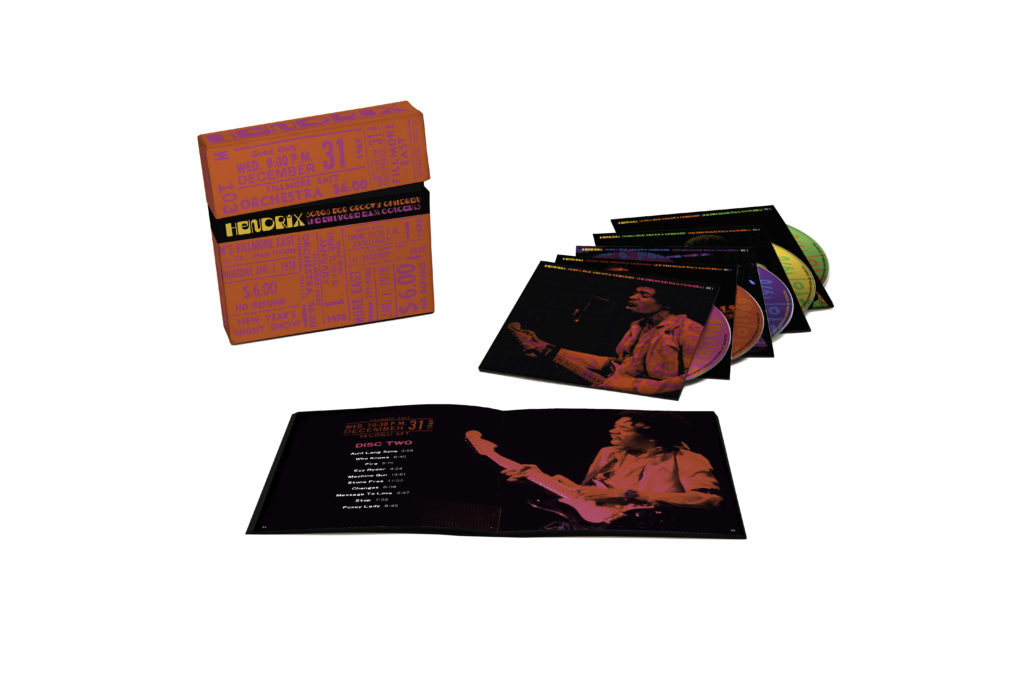
In additional Hendrix-themed endeavors, this past October, Strax Technologies Inc., the innovative company behind a new wave of digital art and augmented reality art collections, has announced the global launch of the Jimi Hendrix Collection™.
The news comes as a result of a global merchandise license agreement with Authentic Hendrix, LLC, a division of Experience Hendrix, LLC, headed by CEO/President Janie Hendrix.
The pact calls for the creation and development of a series of compelling limited editions of Jimi Hendrix’s own artworks, iconic photographs of the legendary performer, rare releases of handwritten lyrics and album cover art that spotlight Hendrix as the multi-dimensional artist he truly was.
Strax Technologies Inc, under its StraxArt™ brand, intends to incorporate unique and imaginative visual art elements to produce a rare collection of important and accessible works. These are based on Jimi Hendrix’s poetic writing, musical expression, visual art and gift of integrating a profound cultural awareness into all of these entities.
The two organizations have developed and assembled a rare collection of limited-edition Jimi Hendrix-related pieces, many of which have ever been displayed or available for purchase.
“Jimi’s versatility and array of artistic talent was part of what made him so amazing. His gift was so enormous that it expanded into a surprising range of art forms,” said Janie Hendrix, CEO/President of the Hendrix Family Companies.
“Together with StraxArt, we have produced a beautiful collection that represents the many dimensions of Jimi’s artistry. We’re excited to offer these exclusive pieces, designed with those who love Jimi in mind.”
“Our process model enables StraxArt to offer limited edition framed prints of Jimi Hendrix pieces at a price that is accessible to everyone,” says Eric Singleton, co-founder and advisor to Strax Technologies, Inc.
“It was crucial to our mission to make these available without any compromise on quality. We use pigment inks, sustainably sourced framing and 100% cotton museum quality paper for a true heirloom product that embraces the spirit of fine art and the spirit of Jimi – one of the most important aspects of our mission.”
The "Jimi Hendrix Collection™" is printed with the Authentic Hendrix seal certifying their authenticity. Jimi’s authorized signature is placed on every piece.
Each limited-edition print comes complete with an Authentic Hendrix Certificate. Strax Technologies will continue to present new limited-edition works going forward and will also hold select live events fulfilling the mission.
Need some more Jimi Hendrix?
Burning Desire: The Jimi Hendrix Experience through the Lens of Ed Caraeff was initially published in hardcover in November 2018 by Acc Art Books.
At the 1967 Monterey International Pop Festival as Hendrix's guitar went up in flames, 17-year-old Ed Caraeff, snapped the shot that would later appear on the cover of Rolling Stone magazine not once, but twice. Hendrix was so impressed with the photos that he invited Caraeff to shoot his future Southern California gigs from 1967-1969.
Caraeff captured Jimi in many never-before-published images housed in his awe-inspiring dedicated Hendrix archive. From onstage to backstage, Jimi Hendrix was as electric in front of the camera as he was when he playing any guitar.
In Burning Desire, Caraeff exhibits more than 100 images, including rare pictures and contact sheets.
Our friends at the well-respected Jimi Hendrix Information Management Institute also tout two Hendrix-themed titles well worth investigating—Jimi Hendrix: Black Legacy (A Dream Deferred) 2nd Edition by Corey A. Washington. Washington Press and Jimi Hendrix-The Complete Scores.
As a teenager on June 20, 1969, Harvey Kubernik witnessed the Jimi Hendrix Experience at the Newport ’69 Pop Festival in Devonshire Downs, Northridge, CA.
Harvey Kubernik is the author of 15 books. His literary music anthology Inside Cave Hollywood: The Harvey Kubernik Music InnerViews and InterViews Collection Vol. 1, was published in December 2017, by Cave Hollywood. Kubernik’s The Doors Summer’s Gone was published by Other World Cottage Industries in February 2018. It’s recently been nominated for the 2019 Association for Recorded Sound Collections Awards for Excellence in Historical Recorded Sound Research.
During November 2018, Sterling/Barnes and Noble published Kubernik’s The Story of The Band From Big Pink to the Last Waltz.
In 2019, The National Recording Registry at the Library of Congress in Washington, DC asked Harvey Kubernik to pen an essay on the landmark The Band album, now celebrating a 50th-anniversary edition in 2019.
Kubernik’s 1995 interview, Berry Gordy: A Conversation With Mr. Motown appears in The Pop, Rock & Soul Reader edited by David Brackett published in 2019 by Oxford University Press. Brackett is a Professor of Musicology in the Schulich School of Music at McGill University in Canada.
Kubernik joined a distinguished lineup which includes LeRoi Jones, Johnny Otis, Ellen Willis, Nat Hentoff, Jerry Wexler, Jim Delehant, Ralph J. Gleason, Greil Marcus, and Cameron Crowe.
Kubernik’s 1996 interview with poet/author Allen Ginsberg was published in Conversations With Allen Ginsberg, edited by David Stephen Calonne for the University Press of Mississippi in their 2019 Literary Conversations Series.
Harvey is featured in the 2014 book by Jeff Burger on Leonard Cohen Interviews and Encounters for Chicago Review Press. During 2015, the University Press of Mississippi published a Harvey Kubernik interview with D.A. Pennebaker in their book series, Conversations with Filmmakers, edited by Dr. Keith Beattie.
This century Kubernik wrote the liner note booklets to the CD re-releases of Carole King’s Tapestry, Allen Ginsberg’s Kaddish, Elvis Presley The ’68 Comeback Special and The Ramones’ End of the Century.
During 2019 Kubernik is serving as a Consultant on a new 2-part documentary on the musical legacy of Laurel Canyon. Alison Ellwood is directing the documentary who helmed the authorized History of the Eagles. Executive produced by Frank Marshall, The Kennedy/Marshall Company; Darryl Frank and Justin Falvey, Amblin Television; Craig Kallman and Mark Pinkus, Warner Music Group; Alex Gibney, Stacey Offman and Richard Perello, Jigsaw Productions; and Jeff Pollack. The film is produced by Ryan Suffern, The Kennedy/Marshall Company, and Erin Edeiken, Jigsaw Productions. Broadcast date is first quarter 2020 on EPIX Television.

